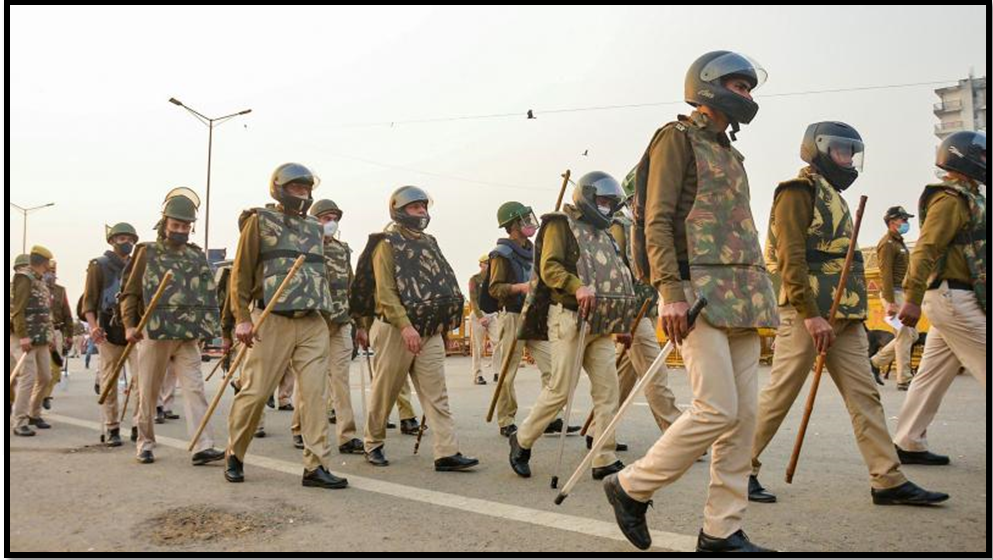NINE INTERNAL SECURITY CHALLENGES
SYLLABUS:
GS 2:
- Challenges to internal security through communication networks, role of media and social networking sites in internal security challenges, basics of cyber security; money-laundering and its prevention.
Focus:
- The government should have a well-or-chestrated plan for the next five years. On internal security, the tollowing nine points should merit serious attention.
Source: Deccan chronicle
Internal security encompasses measures a state adopts to protect its citizens, infrastructure, and institutions from threats within its borders. It aims at maintaining the nation’s safety, security, and resilience against terrorism, hazards, and any internal disturbances. This broad spectrum of activities includes defending against external aggression and dealing with internal threats like terrorism, insurgency, cyber-attacks, and violence that can destabilize national stability.
Internal Security Doctrine
- National Security Doctrine (NSD): The necessity for a comprehensive NSD.
- Existing Efforts: Previous drafts prepared but never approved.
- Significance: NSD describes both internal and external challenges, prescribing policies for addressing them.
- Adhocism: Current approach lacks consistency, especially with government changes.
- Action Point: Develop an internal security component if a full NSD is problematic.
Internal Security Ministry
- Current State: Ministry of Home Affairs is overloaded.
- Issues: Delayed and insufficient attention to urgent internal security matters.
- Proposed Solution: Appoint a young, junior minister with independent charge of internal security.
- Example: Rajesh Pilot’s successful handling of internal security as a junior minister.
Jammu and Kashmir
- Current Situation: Despite reduced terror incidents, recent attacks indicate persistent threats.
- Pakistani Influence: Ongoing objectives of the Pakistani deep state.
- Recommendations: Reorganize the security grid, restore statehood, and hold Assembly elections.
The Northeast
- Prime Minister’s View: Northeast is “a piece of our heart.”
- Challenges:
- Naga Framework Agreement: Unfulfilled hopes due to demands for a separate flag and constitution.
- Manipur: Continuous ethnic conflicts.
- Illegal Migration, Drug Trafficking, Arms Smuggling: Need comprehensive approaches.
- Action Points: Strict implementation of the suspension of operations agreement and direct intervention by the PM in Manipur.
The Naxal Problem
- Current Status: Decline in violence and geographical spread of left-wing extremism (LWE).
- Government Claims: Significant reduction in violence and affected police stations.
- Next Steps: Offer an olive branch to Naxals, declare a unilateral ceasefire, and address genuine grievances to bring them into the mainstream.
Intelligence Bureau (IB) and Central Bureau of Investigation (CBI)
- IB: Established in 1887, needs restructuring with safeguards against misuse.
- CBI: Set up in 1963, needs legal strengthening as recommended by a parliamentary committee.
- Issues: Current arrangements are outdated and require modernization.
- Recommendations: Strengthen both agencies in terms of legal mandate, infrastructure, and resources.
State Police
- Prime Minister’s Vision: Transforming police functioning to match the efficiency of the PMO.
- Current State: “Ruler’s Police” inherited from the British.
- Reform Goal: Transform into a “People’s Police.”
- Historical Example: Robert Peel’s successful police reforms in Britain.
- Opportunity: Prime Minister’s chance to enact significant police reforms.
Central Armed Police Forces (CAPFs)
- Current Issues: Unplanned expansion, haphazard deployment, inadequate training, and falling discipline standards.
- Internal Friction: Between cadre and All India Service officers.
- Solution: Appoint a high-powered commission to address long-term problems.
Technology
- Potential: Enormous scope for technological advancements in police work.
- Force Multipliers: Technological inputs can significantly enhance police efficiency.
- PM’s Suggestion: Set up a high-powered technology mission to adopt the latest technologies.
- Future Challenges: Prepare for emerging threats and challenges.
Conclusion
- National Strength: Internal cohesion is crucial for international strength.
- Foresight and Imagination: Internal security measures must be proactive and well-planned.
Responses to Internal Security Challenges
Legal Frameworks
- Refinement: Updating laws to address current threats while safeguarding human rights.
Intelligence Capabilities
- Enhancement: Improving intelligence gathering and sharing to preempt threats.
Community Engagement
- Building Relationships: Fostering trust within communities to deter radicalization.
- Public Participation: Encouraging community involvement in security measures.
Technological Investments
Adoption: Implementing advanced technologies for surveillance and cybersecurity.
Training Security Forces
- Professional Training: Ensuring security personnel are well-trained and equipped to handle diverse threats.
- Capacity Building: Regular training programs to update skills and knowledge.
Inter-Agency Collaboration
- Facilitation: Promoting information sharing and cooperation among different agencies.
- Coordination Mechanisms: Establishing frameworks for effective inter-agency coordination.
Addressing Socio-Economic Challenges
Policy Implementation: Developing and executing policies to tackle the root causes of discontent and unrest.
Economic Development: Promoting economic opportunities to reduce poverty and unemployment.
Source:The Hindu
Mains Practice Question:
Discuss the major internal security challenges faced by India. What steps can be taken to enhance internal security and ensure national cohesion? Critically evaluate the current measures and suggest improvements.
Associated Articles:
https://universalinstitutions.com/daily-answer-writing-practice/
https://universalinstitutions.com/download-types/internal-security/




